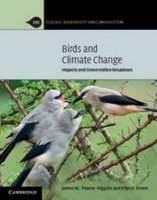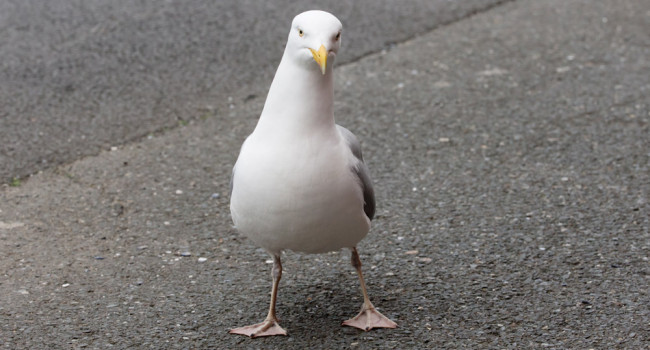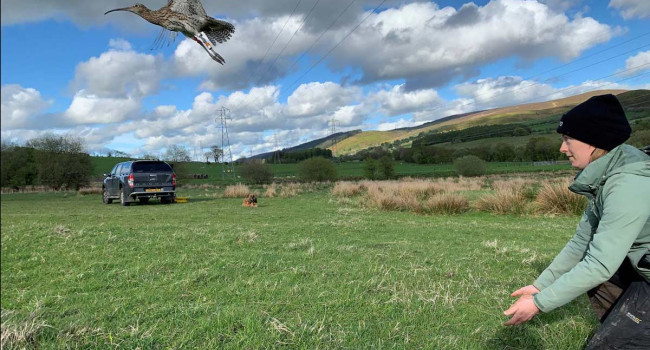Birds and Climate Change - A global review of the impact of climate change on birds
01 Jun 2014 | No. 2014-36
Climate change is likely to add to the many existing pressures on bird populations. Birds and Climate Change documents these impacts on a global scale and considers the potential for conservationists to reduce the severity of the threat that climate change may pose to many species.
Birds and Climate Change shows that recent climate change has already had a significant impact on bird populations around the world. These impacts are projected to become much larger in the future, increasing the extinction risk for many species. However, the book gives reasons for cautious optimism. We have a window of opportunity to reduce the threat that climate change poses if action is taken now. To address this, we need to reduce the future amount of climate change. Increased use of renewable energy can help, although if not deployed carefully, it can also cause unintended but significant problems to many bird species. The other type of action is to adapt existing approaches used to counter threats to bird populations so that they also deal effectively with climate change. The book reviews these two kinds of action and examines their likely effectiveness.
In Britain, the patterns of distribution and abundance of the Red Grouse are closely tied to the availability of heather, the bird’s main food plant. Although heather itself has a wide distribution, the grouse only occurs extensively in the cool, oceanic climate of Britain and Ireland’s uplands. The book highlights that despite many grouse populations being managed for sport shooting, climatic conditions ultimately limit where it is found. It is threatened by future climate change through a range of different mechanisms, from effects on food availability and heather quality, to those on disease incidence. However, there may be management measures which could be taken to reduce these impacts.
The globally-threatened Ethiopian Bush-crow occupies a very restricted area at the southern edge of the Ethiopian Highlands. It lives in a mosaic of grassland and acacia vegetation, formerly maintained by wild grazers but now by domestic livestock. Suitable habitat appears to be plentiful right outside the species’ range and it appears that the Ethiopian Bush-crow is limited in its range by effects of temperature: it does not occur outside areas with a mean annual temperature range of 16.5-20°C. In effect it lives in a discrete temperature bubble, which may well burst when the climate changes.
These are just two examples of the effect a changing climate might have on birds, many more are explored within the book.
Author James Pearce-Higgins (BTO) said “Although the main messages in the book may seem pessimistic, that climate change threatens birds, there are reasons for cautious optimism. We have a window of opportunity to reduce the threat that climate change poses if action is taken now. The challenge for policy-makers is to ensure that renewable energy and other measures to reduce climate change are adopted without significantly adding to the threat that many birds face. The less climate change there is, the easier it will be to effectively use the conservation measures that we discuss to protect the birds around us."
Author Rhys Green (RSPB) said "Climate change is a severe long-term threat to birds and other wildlife. Our book brings together results from studies across the world that document the impacts of climate change on birds that have happened already and those that can be expected in future. More important, we explore how negative impacts of climate change on bird conservation could be countered by understanding better how they work. Researching this book gave us a fascinating insight into the way nature is being shaped by these global changes, and this should serve as a warning for the future. I hope that bringing this evidence together will help inform future scientific studies in this area and conservation efforts to save species on the edge. Even so, we need to do much more to understand how climate change is affecting life on earth."
Birds and Climate Change
James W Pearce-Higgins and Rhys E Green
Birds and Climate Change is published by Cambridge University Press.
Notes for Editors
- The BTO is the UK's leading bird research charity. A growing membership and up to 60,000 volunteer birdwatchers contribute to the BTO's surveys, collecting information that underpins conservation action in the UK. The BTO maintains a staff of 100 at its offices in Thetford, Stirling, Bangor (Wales) and Bangor (Northern Ireland), who analyse and publicise the results of surveys and projects. The BTO's work is funded by BTO supporters, government, trusts, industry and conservation organisations. www.bto.org
- The book is being launched at a special event to be held at The Judge Business School in Cambridge on Tuesday 1 July 2014.
Contact Details
Paul Stancliffe
(BTO Media Manager)
Office: 01842 750050
(9am to 5.30pm)
Mobile: 07585 440910 (anytime)
Email: press [at] bto.org
Images are available for use alongside this News Release.
Please contact images [at] bto.org quoting reference 2014-36
The BTO has an ISDN line available for radio interviews.
Please contact us to book an interview
Office: 01842 750050







Share this page